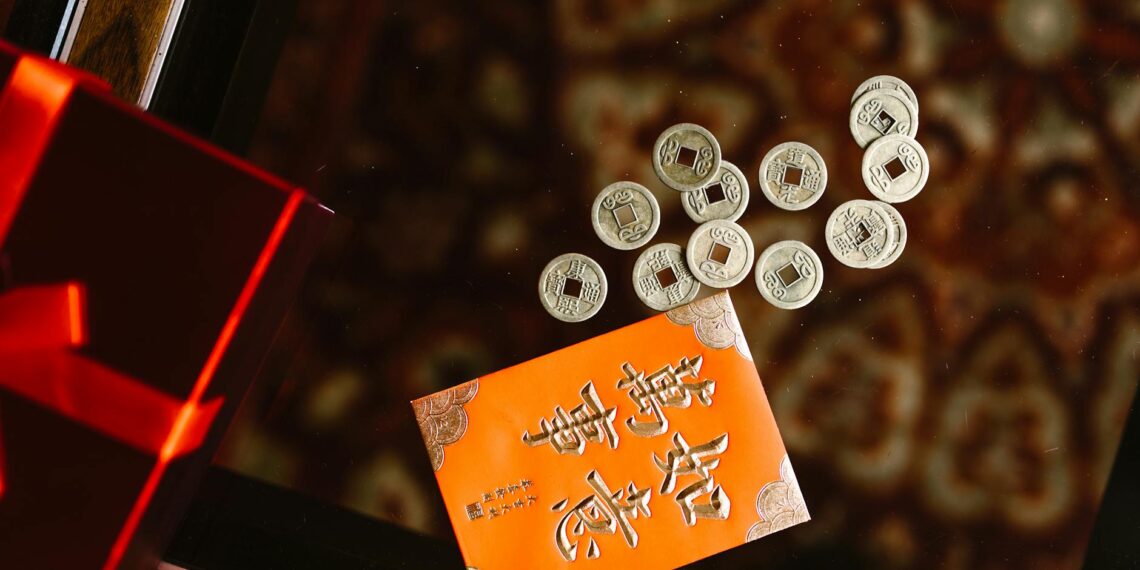Chinese lucky coins, particularly those used in Feng Shui, are steeped in symbolism and are believed to attract wealth, prosperity, and good fortune. Here’s a breakdown of common symbols and their interpretations:
- Round coin with a square hole: This represents the union of heaven and earth, with the circular shape symbolizing heaven and the square hole symbolizing the earth.
- Two sides (yin and yang): One side, considered the Yang side, often features four Chinese characters, usually the names of emperors, representing the emperor’s reign. The other side, the Yin side, may have two characters or be left blank.
- Red ribbon: Coins are often tied together with red ribbons, as red is considered an auspicious color in Feng Shui, symbolizing life force, energy, vitality, and protection.
- Emperor’s reign names: The four characters on the Yang side commonly denote the reign names of emperors, particularly those from the Qing Dynasty, [according to eBay – besthome888] . These are believed to bring luck and positive Chi for health and wealth.
- Auspicious phrases: Charms and amulets may feature inscriptions like Changming Fugui (長命富貴, “Longevity, wealth, and honour”), [according to Wikipedia] or Fushou Tongtian (福壽同天, “good fortune and longevity on the same day”).
- Lucky characters: The character 福 (fú ), signifying “good fortune” or “happiness”, is frequently used. The character 壽 (shòu ), representing “longevity”, also appears commonly.
- Three-legged toad (Jin Chan): Also known as the money frog, this symbolizes wealth and prosperity, and is believed to bring abundant wealth when placed near the house entrance facing inwards.
- Bats: The Chinese word for “bat” (蝠, fú ) sounds similar to “happiness” (福, fú ). Five bats represent the “Five Blessings”: longevity, wealth, health, composure, virtue, and a natural death in old age.
- Dragon (Loong): A mythical creature representing power, strength, and good luck, often associated with the emperor.
- Pixiu: A winged lion with a dragon’s head, believed to attract wealth and good fortune, often depicted with a coin in its mouth.
- Pomegranates: Symbolizing the desire for many sons.
- Gourds (Calabash): The word for gourd (hú , 葫) sounds like the word for “protect” (護, hù ) or “blessing” (祜), making them symbols of protection and health, particularly for children.
- Mirrors: Representing good fortune and protection against evil spirits.
- The Eight Treasures: Chinese coins are considered among these eight symbols of good fortune which include objects like pearls, lozenges, and rhinoceros horns.
These symbols, when combined and strategically placed according to Feng Shui principles, are believed to enhance positive energy and bring about desirable outcomes in various aspects of life, including wealth, health, career, and relationships.









What are the 5 Chinese coins for feng shui?
Meaningful design: The 5 coins are carved respectively with names of 5 Emperors from Chinese Ching Dynasty, which represent 5 blessings of health, happiness, fortune, prosperity and success. The Chinese knot symbolizes longevity and wisdom. It is also a good Feng Shui ornament that will bring good luck.
Where do you put Chinese lucky coins?
I can help with that. Entrance (Front Door): Always place coins on the inner side of the door.
Wealth Corner: Identify the southeast corner of your home or office and place coins there.
Under Carpets: To discreetly attract positive energy in rooms.
Wallet or Purse: To keep wealth flowing continuously.
What is the luckiest Chinese symbol?
Great question! Fu is a popular character for good luck and is often displayed during Chinese New Year. Lu symbolizes prosperity and is linked to feng shui, an ancient art for health and wealth. Shou stands for longevity and is often seen on decorations for birthdays and auspicious events.